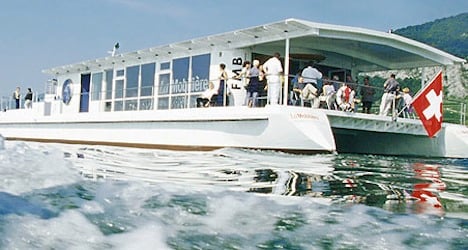Bern cantonal police on Monday issued a warning for caution to operators of boats on Lake Biel because of tree trunks and branches in the lake.
Work got under way to collect the wood to minimize danger of collisions for boaters.
Cruises on Lake Biel and the Three Lakes route were maintained, the Bielersee Schiffhart (BSG), operator of passenger boats, announced.
Meanwhile, authorities increased the flow of water into the Nidau-Büren canal to ensure that the level of the lake did not spill over its banks.
Heavy rain between Friday night and Sunday morning caused millions of francs’ worth of damage in the regions of Fribourg, Bern, Frauenfeld (in the canton of Thurgau) and Winterthur (in the canton of Zurich).
The basements of numerous buildings were flooded, the ATS news agency reported.
Bern property insurer GVB estimated damage in the canton at around four million francs ($4.5 million).
Köniz, a suburb of the Swiss capital, was the worst hit, accounting for close to half the damage.
Six people forced to evacuate their homes in the municipality on Saturday night were able to return, ATS said.
Insurance company GVRG estimated damage in the canton of Thurgau at up to one million francs.
Meanwhile, rail service resumed on Monday on the line between Bern and Fribourg after a landslide on the weekend halted trains.
Passenger trains began to run again the same day on the Montreux-Oberland- Bernois (MOB) line between Chamby, in the canton of Vaud, and Montbovon, in the canton of Fribourg, after crews cleared another landslide.




 Please whitelist us to continue reading.
Please whitelist us to continue reading.
Member comments